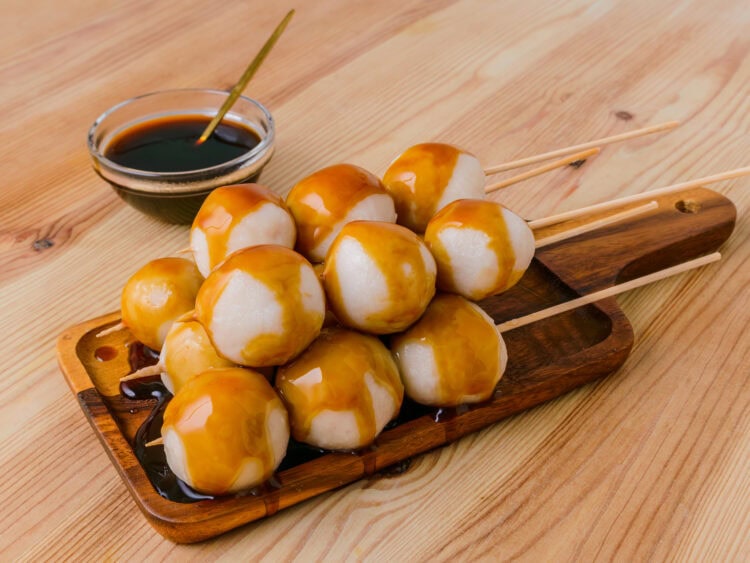Mitarashi dango: an irresistibly addictive Japanese sweet
When the first rays of spring sunshine appear, this is Japan’s go-to snack, and with good reason. These rice balls, glazed with sweet soy sauce, deliver a delightfully soft texture and subtle flavor. They are a perfect way to welcome spring, right on the plate!
What exactly are mitarashi dango?
Anyone who has seen them or, better yet, tasted them knows: when made right, mitarashi dango (みたらし団子) are worth seeking out, especially now that the first warmth of the season is emerging. They easily stand beside dorayaki, mango sticky rice and hotteoks among the world’s most beloved Asian desserts
Among dumplings, mitarashi dango are the kind you can pop endlessly without thinking. In traditional Japanese cuisine, they are small sweet rice balls threaded onto a bamboo skewer and coated with a sweet soy sauce glaze. Each skewer usually holds three to five balls, with five being the most common.
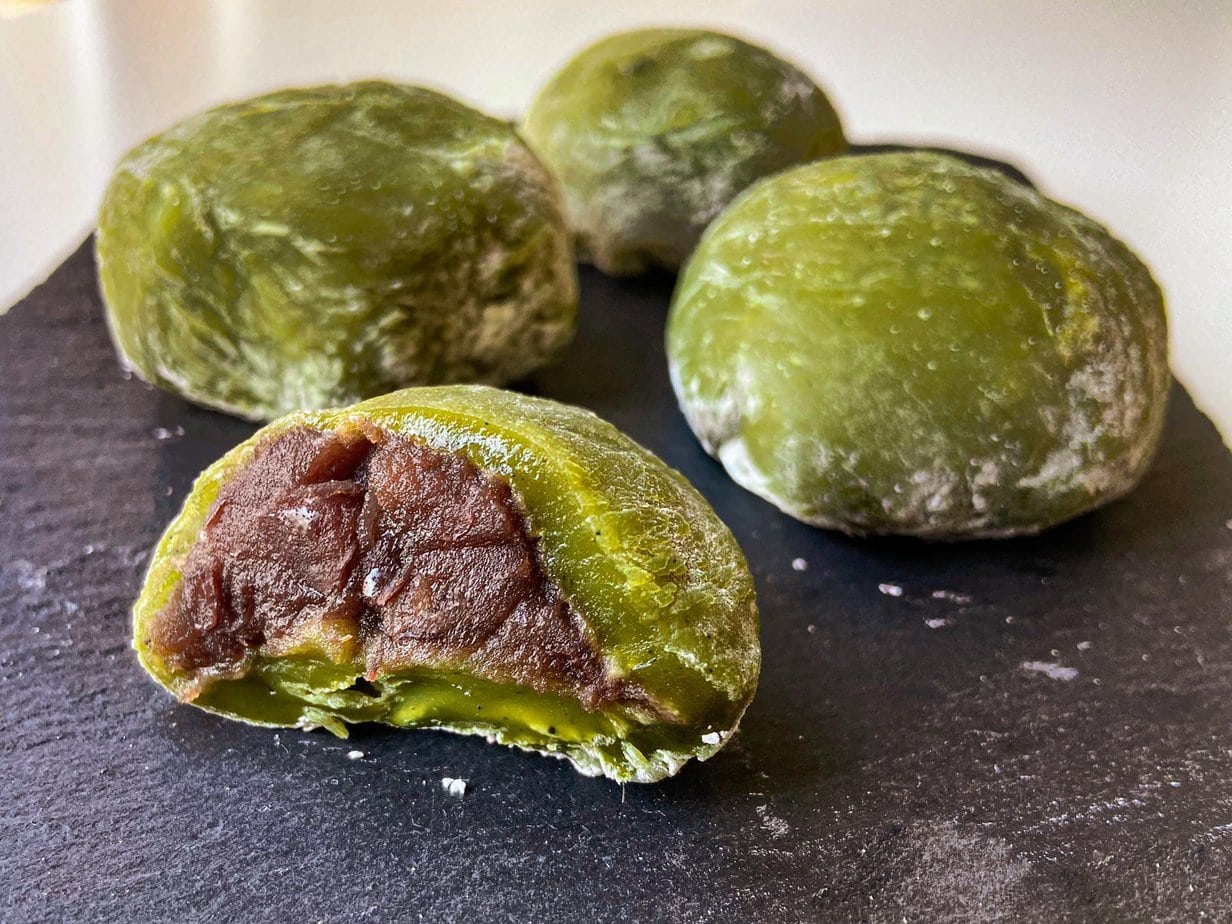
Soy sauce might sound odd at first, but it blends in beautifully. Each bite is tender, melt in the mouth, and not overly sweet. Better yet, dango are quite easy to make at home.
Where do mitarashi dango come from?
Dango have been cherished in Japan for centuries. They are first mentioned in a poem from the Heian period (794-1185). In the Jomon period, they were made from ground nuts mixed with hot rice; a few centuries later, someone thought to skewer them. They were often served during specific celebrations.
The name “mitarashi dango” is said to be linked to the Mitarashi Matsuri, a festival at Kyoto’s Shimogamo Shrine.
Side note: The word “mitarashi” originally referred to the small pool or fountain used for ritual purification at the entrance of some temples. Worshippers would prepare “dango” as offerings to the temple’s deities.
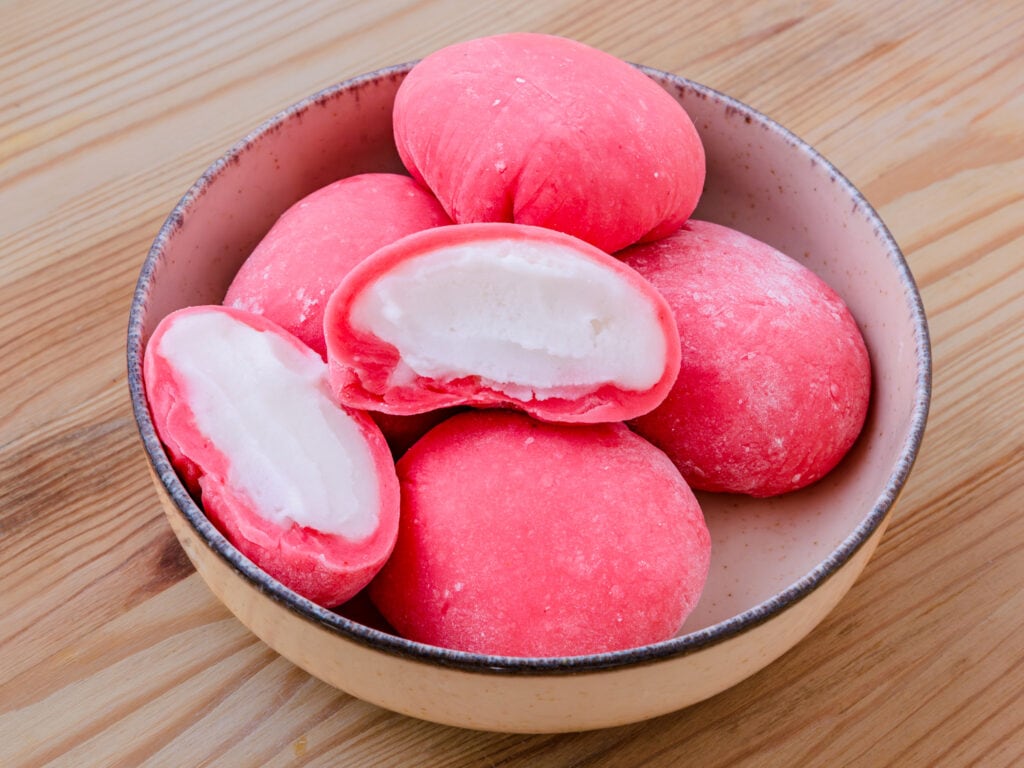
Originally, dango were made from nothing more than rice flour and water. About ten bamboo skewers were prepared, each holding five dango arranged in a fan shape.
Why five dango, you ask? No one is completely sure. One story links the number to Emperor Go-Daigo’s visit to the shrine during the Kamakura period, after which he saw four bubbles rise on the surface of the Mitarashi pond. Another theory holds that the five dango, sold as a local specialty, were meant to represent the human body.
In that interpretation, the first, larger ball represents the head, while the remaining four stand for the arms and legs. What is certain is that Kyoto street vendors eventually began selling this treat as a snack, fueling its popularity.
Dango are also a common feature at Japanese cultural events. Today, mitarashi dango have evolved: some are coated with sugar or soy sauce and infused with flavors such as green tea or sakura.
Main ingredients of mitarashi dango
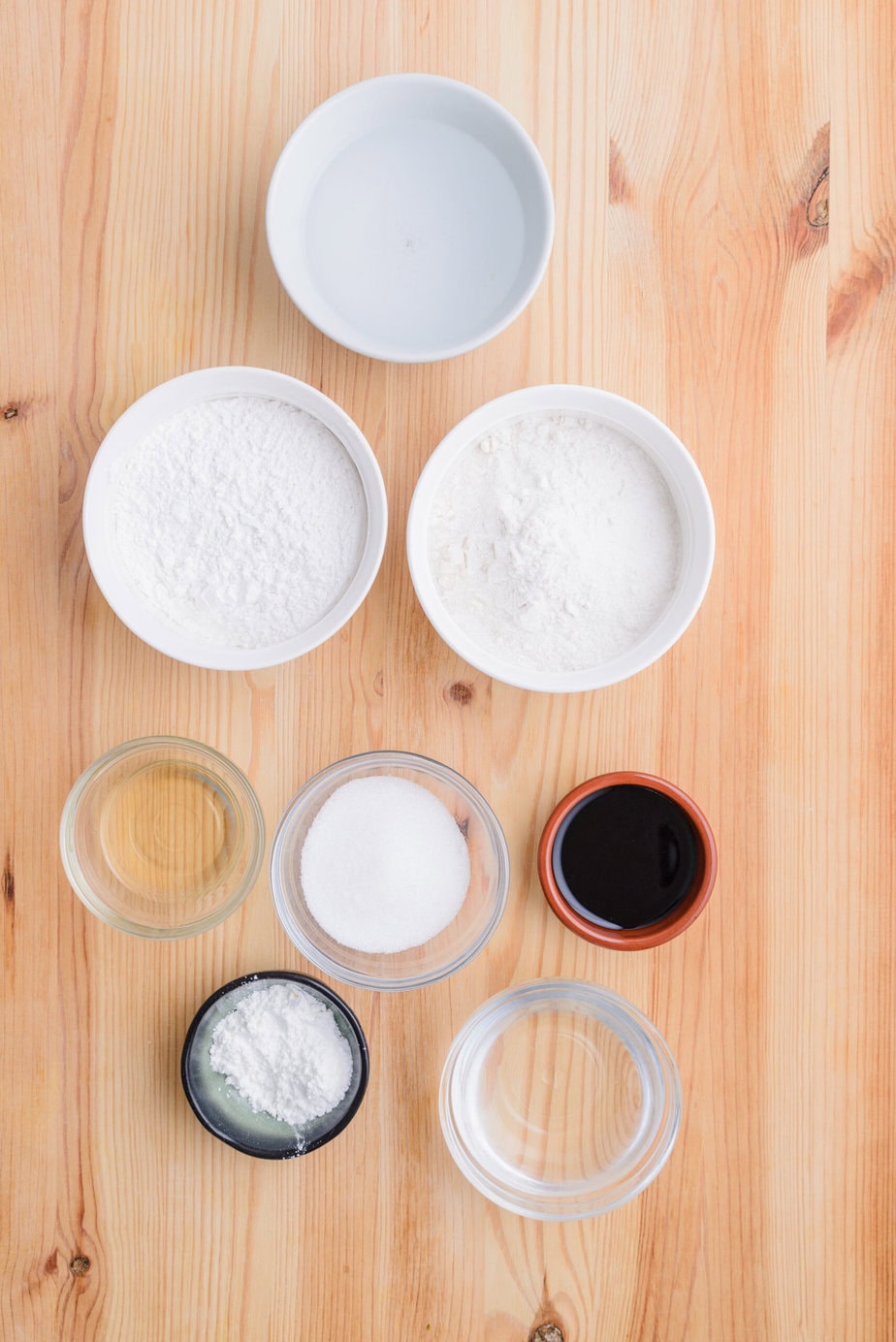
Joshinko: a plain flour made from Japanese short grain rice, commonly used in pastry.
Shiratamako: This, too, is a flour made from glutinous rice, and is used to make mochi. Note that these two flours behave differently and will not produce the same texture.
Light soy sauce: Lighter than the dark variety and lower in salt, it is ideal for coating mitarashi dango. Its flavor is milder and slightly sweet.
Mirin: Like light soy sauce, mirin is sweet and packed with umami.
Tips for successful mitarashi dango
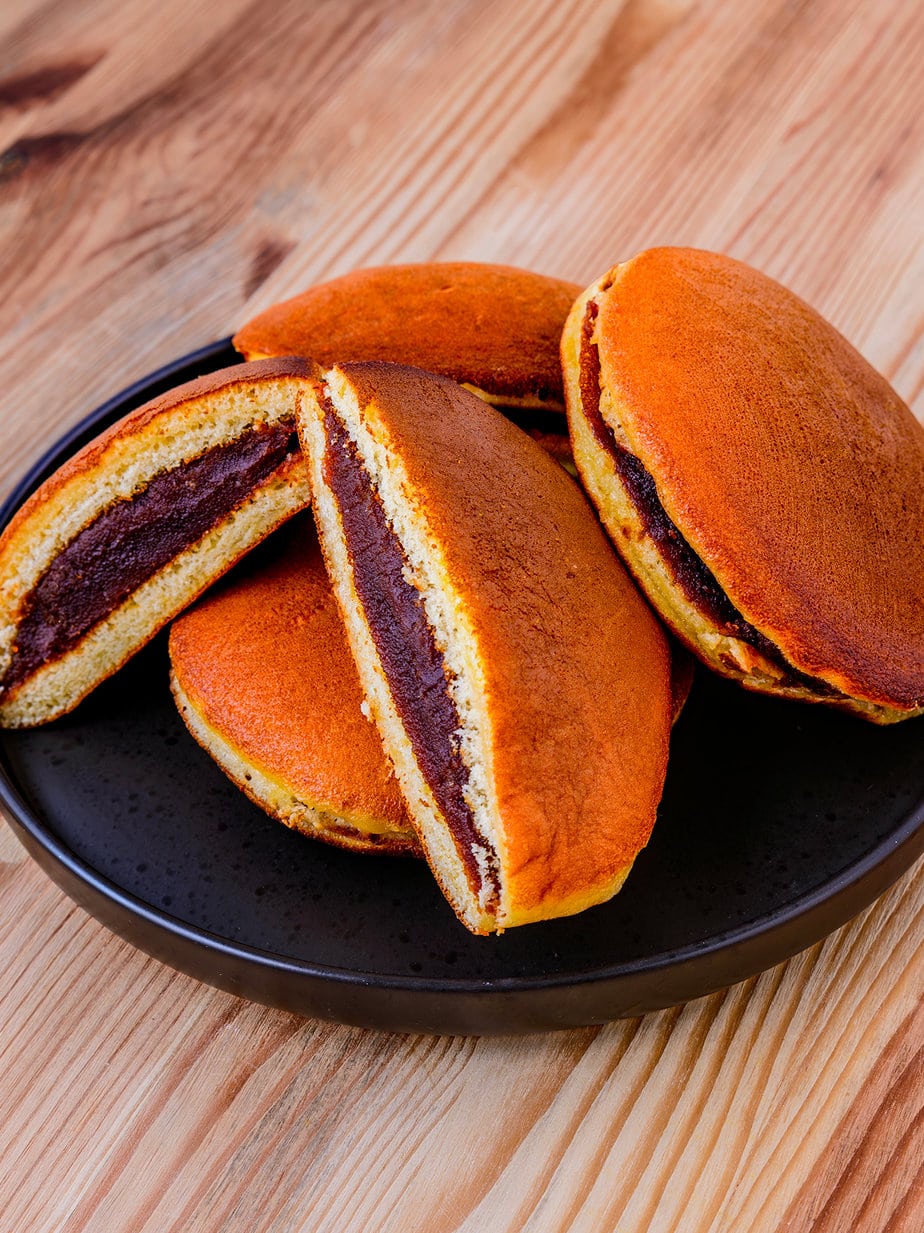
As you have seen, the flours in this recipe are quite specific. Because every flour absorbs water differently, add the water gradually until the dough is firm but not crumbly while you knead.
You may not need the full amount of water. If the dough is too soft, the balls will fall apart during cooking.
Serve the dango as soon as they are ready, while the balls are still tender and the soy glaze is hot.
If you wait, the dango will firm up and become less enjoyable.
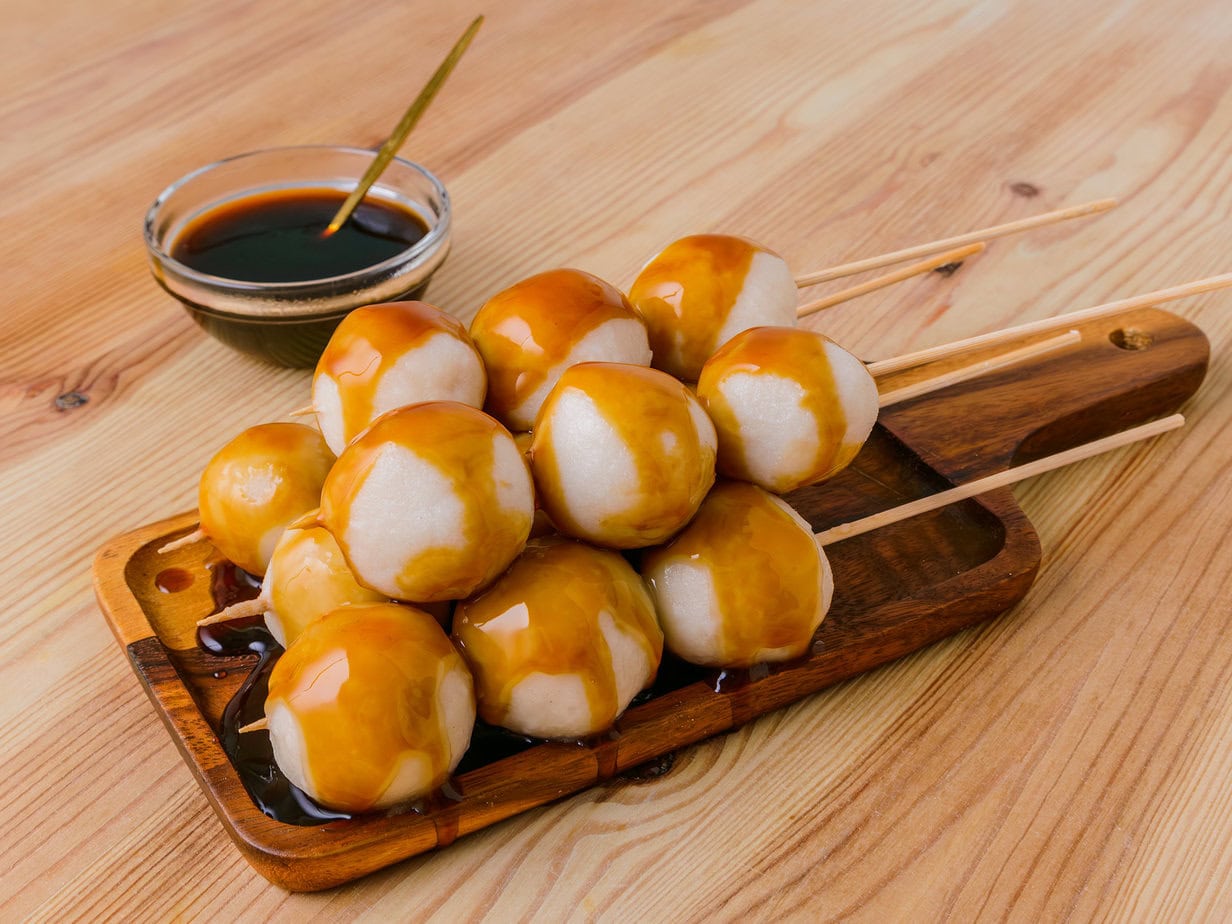
Authentic Japanese Mitarashi Dango
Ingredients
Dumplings
- 100 g Joshinko (rice flour) farine de riz japonaise
- 100 g Shiratamako (glutinous rice flour) farine de riz gluant
- 150 ml boiling water
Sweet soy glaze
- 4 tablespoons sugar
- 2 tablespoons mirin
- 2 tablespoons light soy sauce
- 150 ml water
- 2 tablespoons potato starch
Instructions
- Soak the bamboo skewers in water.

- In a mixing bowl, whisk together the joshinko and shiratamako.
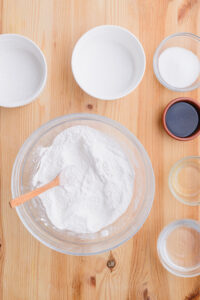
- Slowly pour in the boiling water, stirring as you go.
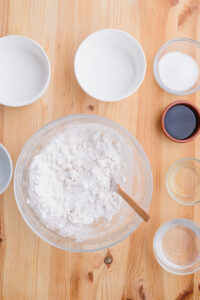
- When the mixture begins to clump, stop adding water and knead until the dough is completely smooth.
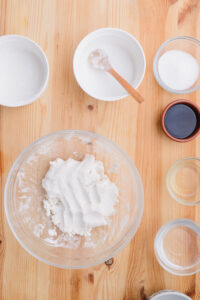
- Shape the dough into a ball, then divide it into as many equal pieces as you’d like dumplings.

- Roll each portion into a smooth, even ball.
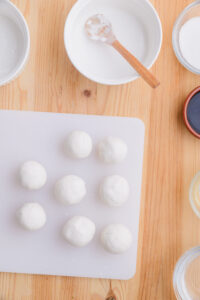
- Set a bowl of ice water nearby.
- Gently drop the dumplings into a large pot of boiling water. Stir occasionally with chopsticks to help them keep their shape.
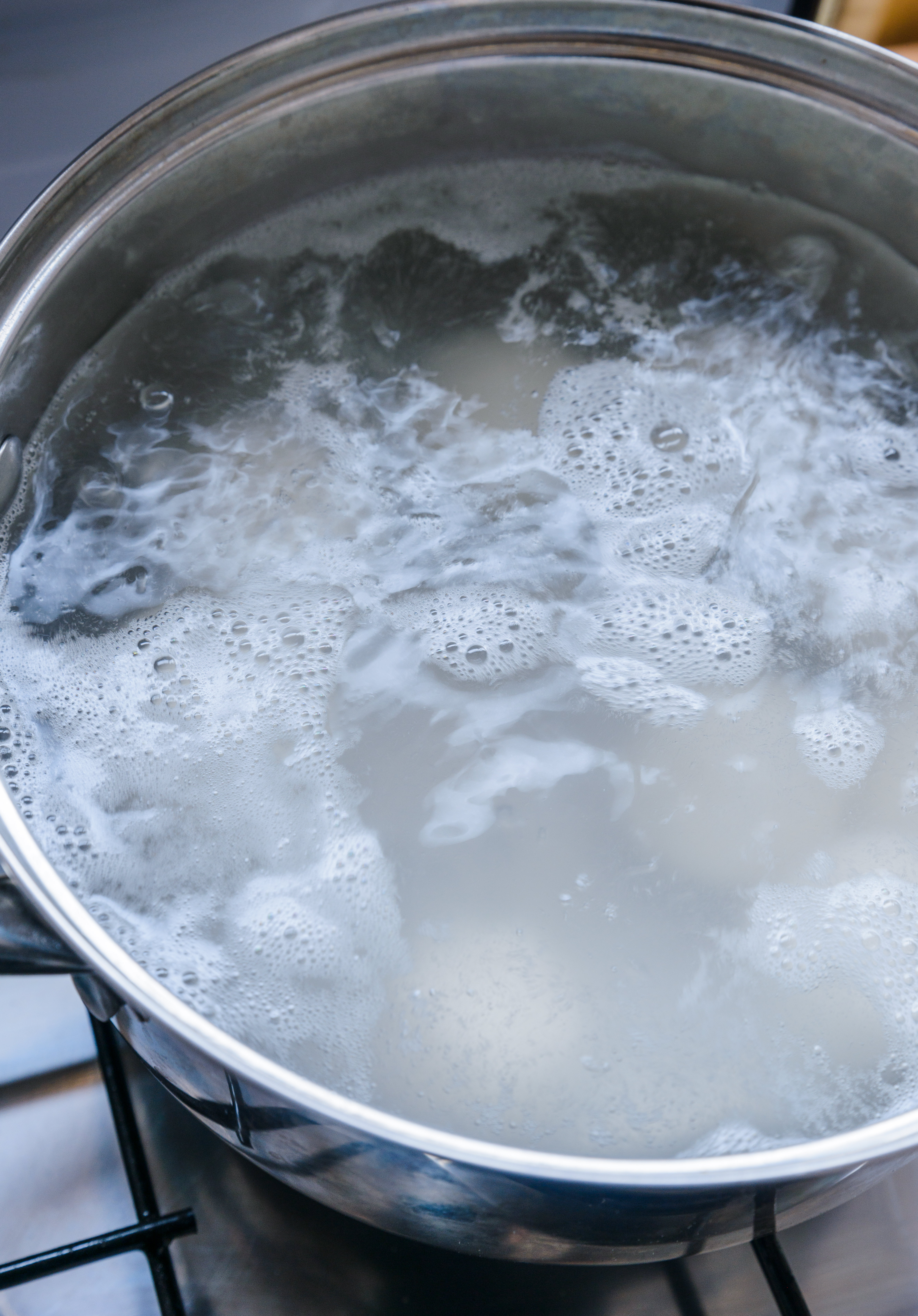
- When the dumplings float to the surface, let them cook for 2 more minutes, then transfer them to the ice bath.
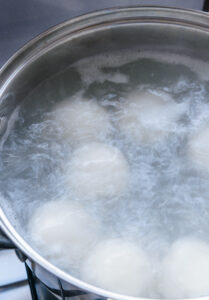
- Once chilled, drain well and place the dumplings on a damp tray to prevent sticking.

- Thread three dumplings onto each soaked skewer.

Make the glaze
- Off the heat, combine the sugar, mirin, soy sauce, water, and potato starch in a saucepan.
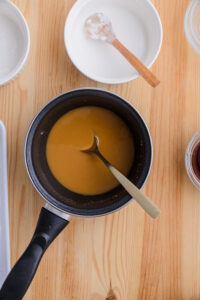
- Stir until the starch dissolves and the mixture is smooth.
- Place over medium heat, stirring constantly, until the sauce thickens to a glossy glaze. Remove from the heat.
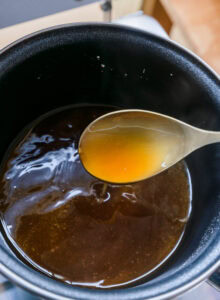
Serve
- Generously spoon the hot glaze over the skewered dumplings and enjoy right away.
Notes
Nutrition
Culinary sources
Recipe adapted entirely from the English language blog “Just One Cookbook”. For once, hardly any tweaks were needed – delicious on the first try. I tried thickening the glaze with kuzu (going ultra traditional, since potatoes are not native to Japan), but the difference was minor compared with potato starch. If you have kuzu, use it, but do not buy it just for this.
